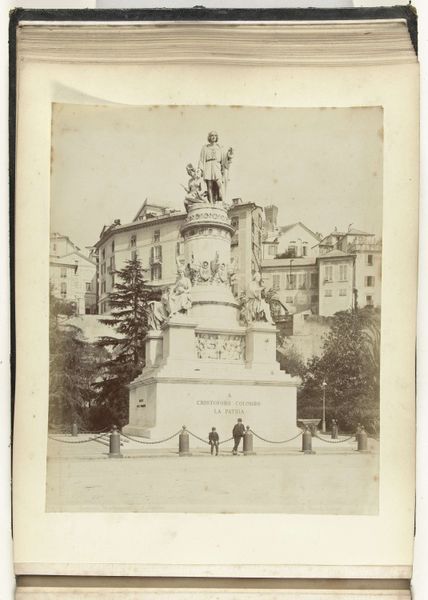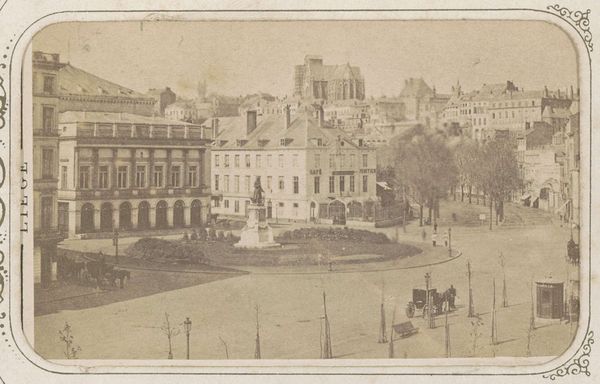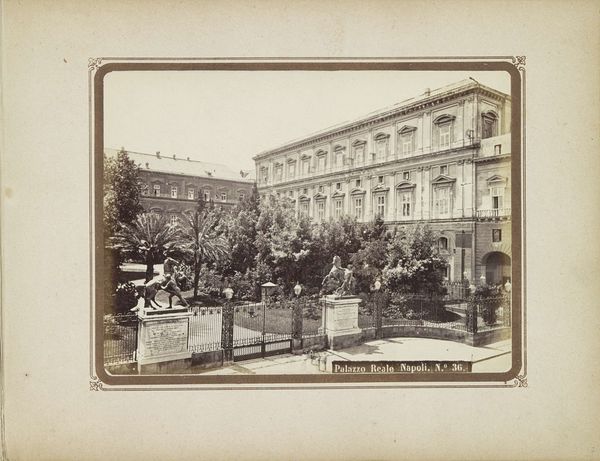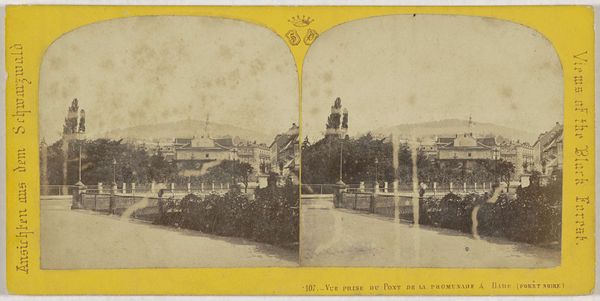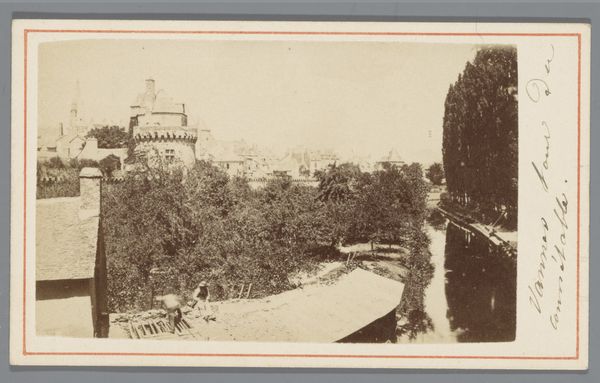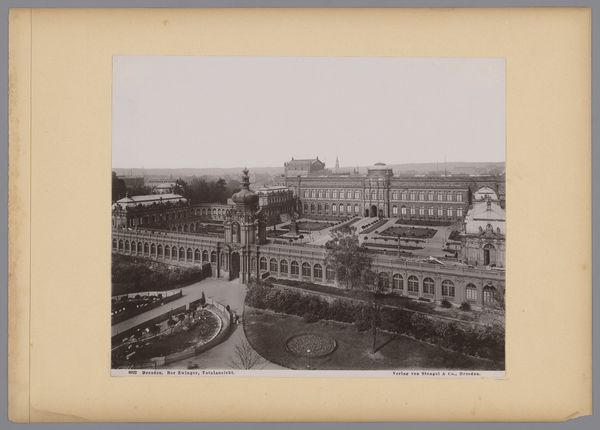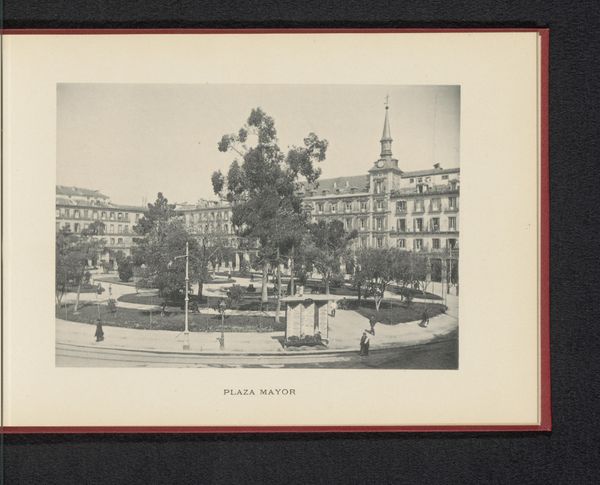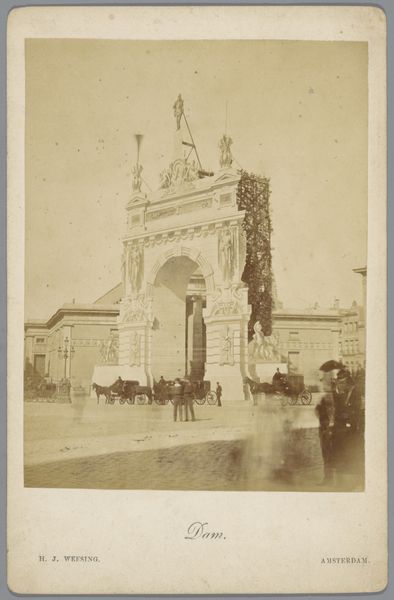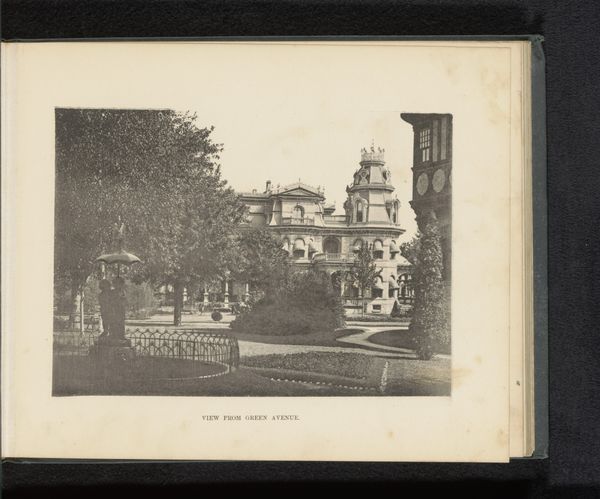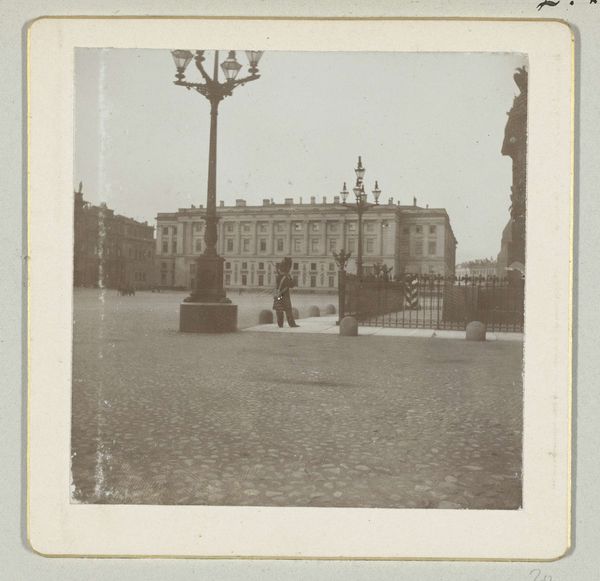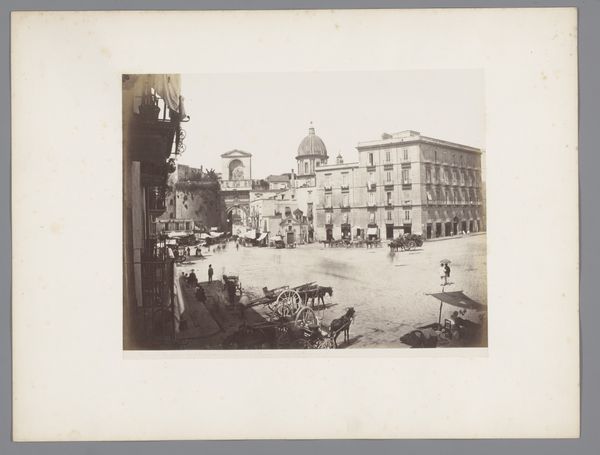
Dimensions: height 144 mm, width 107 mm
Copyright: Rijks Museum: Open Domain
Editor: Here we have Roberto Rive’s photograph of the “Monument op het Piazza dei Martiri in Napels,” likely taken between 1860 and 1900. The monument itself feels very…imposing. All that neoclassical sculpture, looming over the cityscape. What do you see in this piece, from your perspective? Curator: I see a potent example of how public art reinforces dominant power structures. This monument, built in a period of intense political upheaval in Italy, performs a very specific kind of nationalist narrative. Think about who is being memorialized, and whose stories are being erased. Who is a martyr and who isn't, and why? Editor: So, it's not just about remembering the fallen, but about solidifying a particular version of history? Curator: Precisely. This square and this monument visually narrate a version of Italian unification, a Risorgimento seen through a very particular lens. Consider the placement of the column – dominating the urban landscape, it asserts a certain ideological dominance. We must question whose interests this serves and who benefits from such a constructed memory. Editor: The lions especially stand out as symbols of power and control, but what do you think of how the photographer frames this work? Curator: Rive's composition itself participates in this process. By carefully selecting the viewpoint, the photographer emphasizes the monument's grandeur, creating an image that supports the prevailing narrative. Early photography often was put to use for exactly this purpose. Editor: That's fascinating. I hadn't considered how the photograph itself could be part of that narrative construction. It really opens my eyes to the layers of meaning embedded in this seemingly straightforward image. Curator: It's a reminder that art, even documentary photography, never exists in a vacuum. Everything from the monument’s location to the photographic viewpoint serves ideological purposes. Editor: Thanks, this helps me look at these images with new questions in mind!
Comments
No comments
Be the first to comment and join the conversation on the ultimate creative platform.

